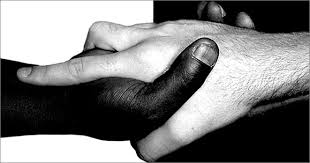Artists who drove the Civil Rights Movement

This archived article was written by: Sky Winder
The list of names contributing to the Civil Rights Movement is a long one with famous names at the top such as Rosa Parks, Anne Moody, and of course, Martin Luther King Jr. Other names are lost among the names listed and artists of the Civil Rights Movement are among those names looked over. African American artists not only voiced the difficulties and hardships placed upon them but also encouraged others to stand up for themselves and join the movement. Every name on the list of activists played a crucial role in joining all of us together.
In Chicago, a group of artists formed a strong bond and began to work together to take their part in pushing the movement forward in 1968. One artist who stood awthe muralists for the “Wall of Respect,” a public work of art encouraging people to express themselves and become who they aspire to be.
As Jones-Hogu’s life continued on, so did her dream of equality. She joined different groups who fought for African American independence and focused mostly on supporting artists like herself. Though her life is now finished, her legacy lives on to inspire many artists to reach their full potential and fight for their own cause.
Throughout the Movement, artists felt inclined to join the cause because they could voice their opinion and their art could act as a form of political defiance. Where protests and speeches failed to get the point across, art could voice the main point: equality.
One artist who fought for equality like none other was Robert Indiana. He was a creator of signs which fit perfectly into the cause where signs and posters were an essential factor in many protests. Although Indiana was not African American, he fought alongside those persecuted.
Artists of all races became activists for this cause and many groups formed to help reach out to other activists, although no group compared to The Organization of Black American Culture. This group, made up of scientists, historians, academics, writers and artists, created the famous “Wall of Respect.” The wall featuring many artists’ works, was a symbol of a more understanding and accepting generation. With the wall came rules. Amongst these rules artists were not allowed to sign their names on the wall for any reason as to keep the message clear. If artists were approached by the media about the wall they would first need permission to talk about the artwork.
The wall was funded by the community so no one group or individual could claim rights to the wall or benefit from the publicity the wall received. According to a report by Jeff Robertson from uchicago.com the “Wall of Respect” was demolished in 1971 due to fire damage to the building. Political motivations were not involved in the decision to remove rather than restore the work, but some still believe outside forces had a hand in the demolition of the wall.
The message of the wall remains clear in the hearts of those who were alive during its existence. The wall was perhaps one of the greatest symbols of the Civil Rights Movement and inspires artists to continue the long hard fight for pure equality.
Many believe Black History Month is outdated and is a holiday we need no longer celebrate but with generations, races and genders all still fighting for equality, maybe it’s a holiday that needs to be celebrated more than ever. We need this holiday to remember what we did when we chose to fight each other and what we did when we chose to stand together.




